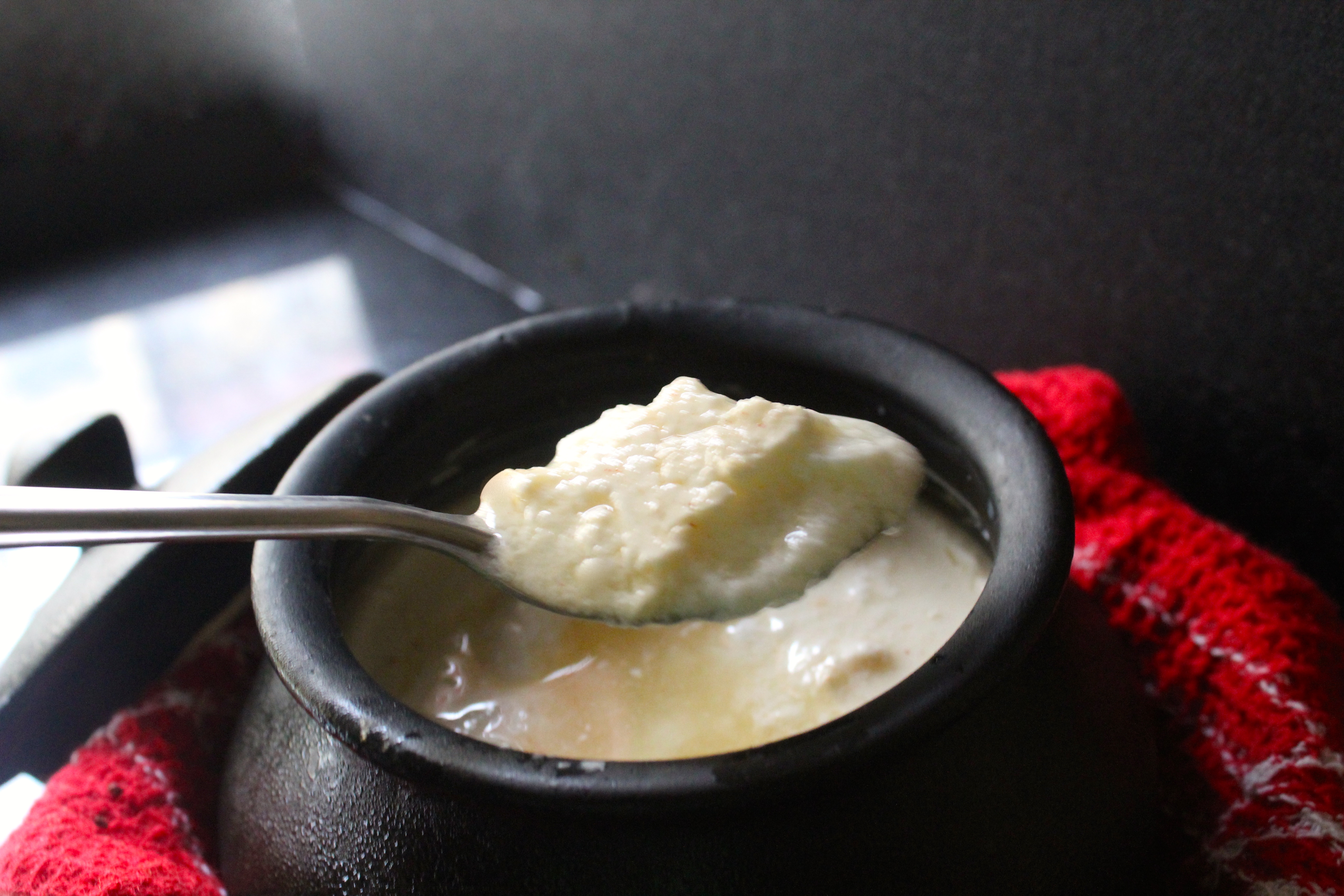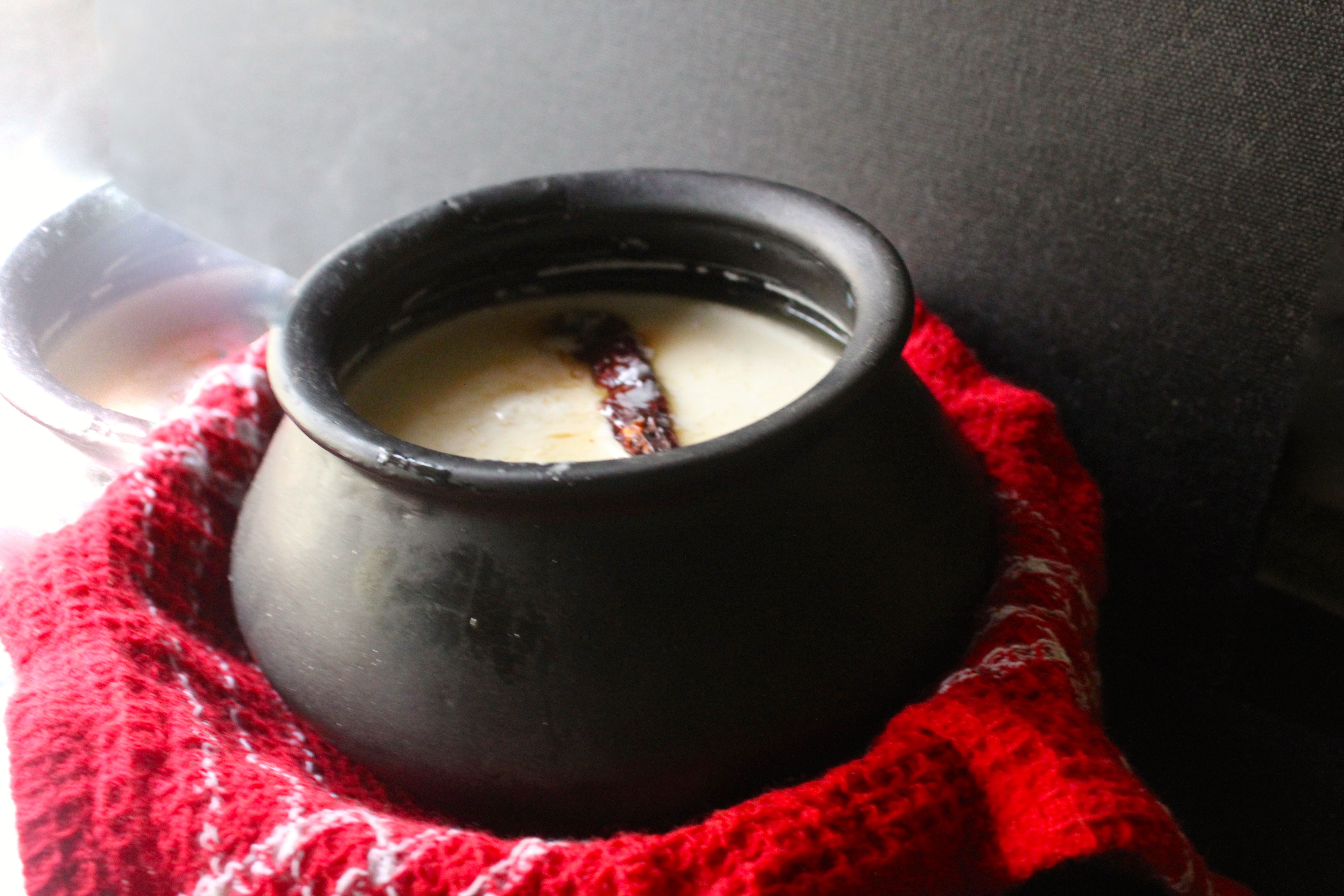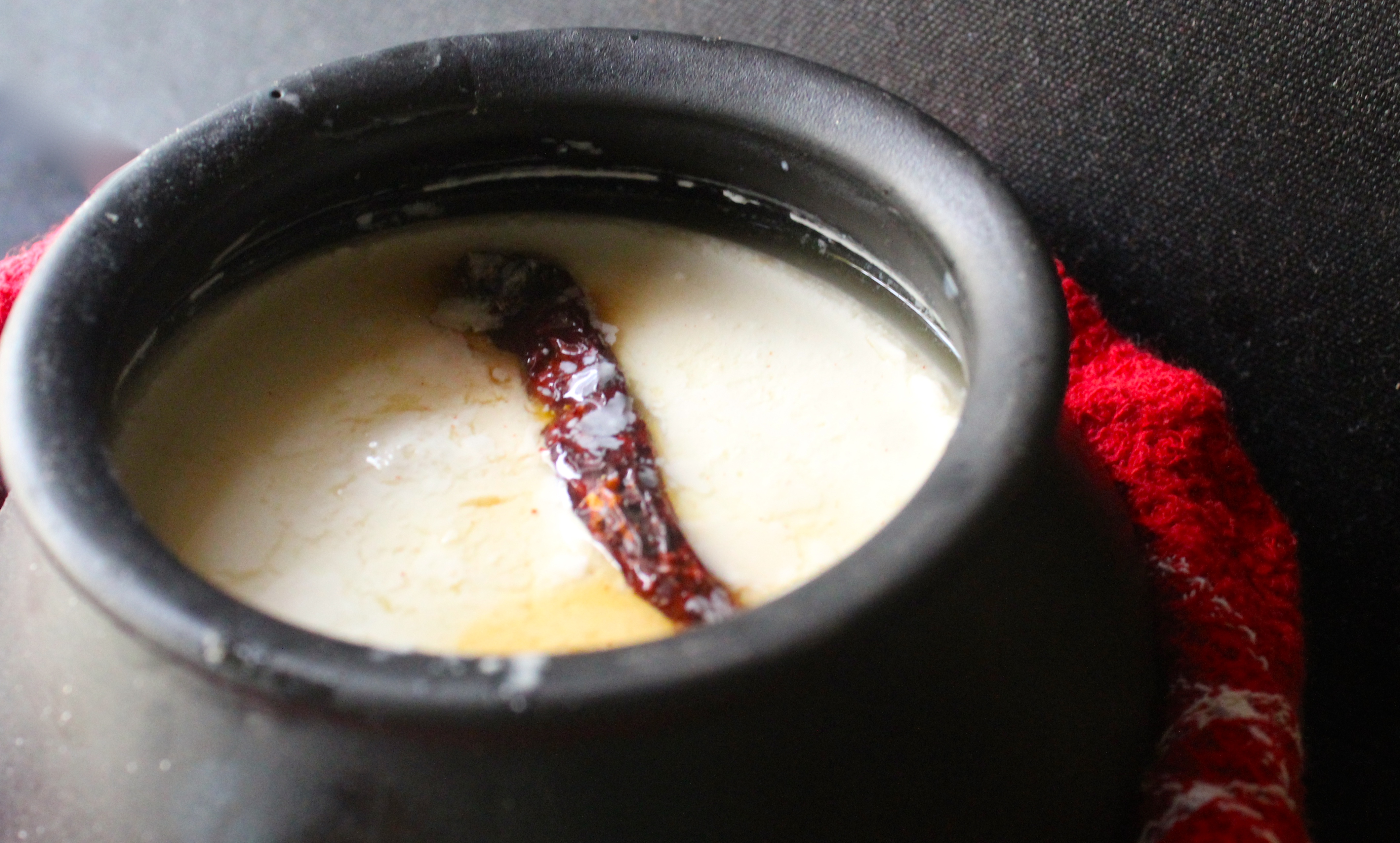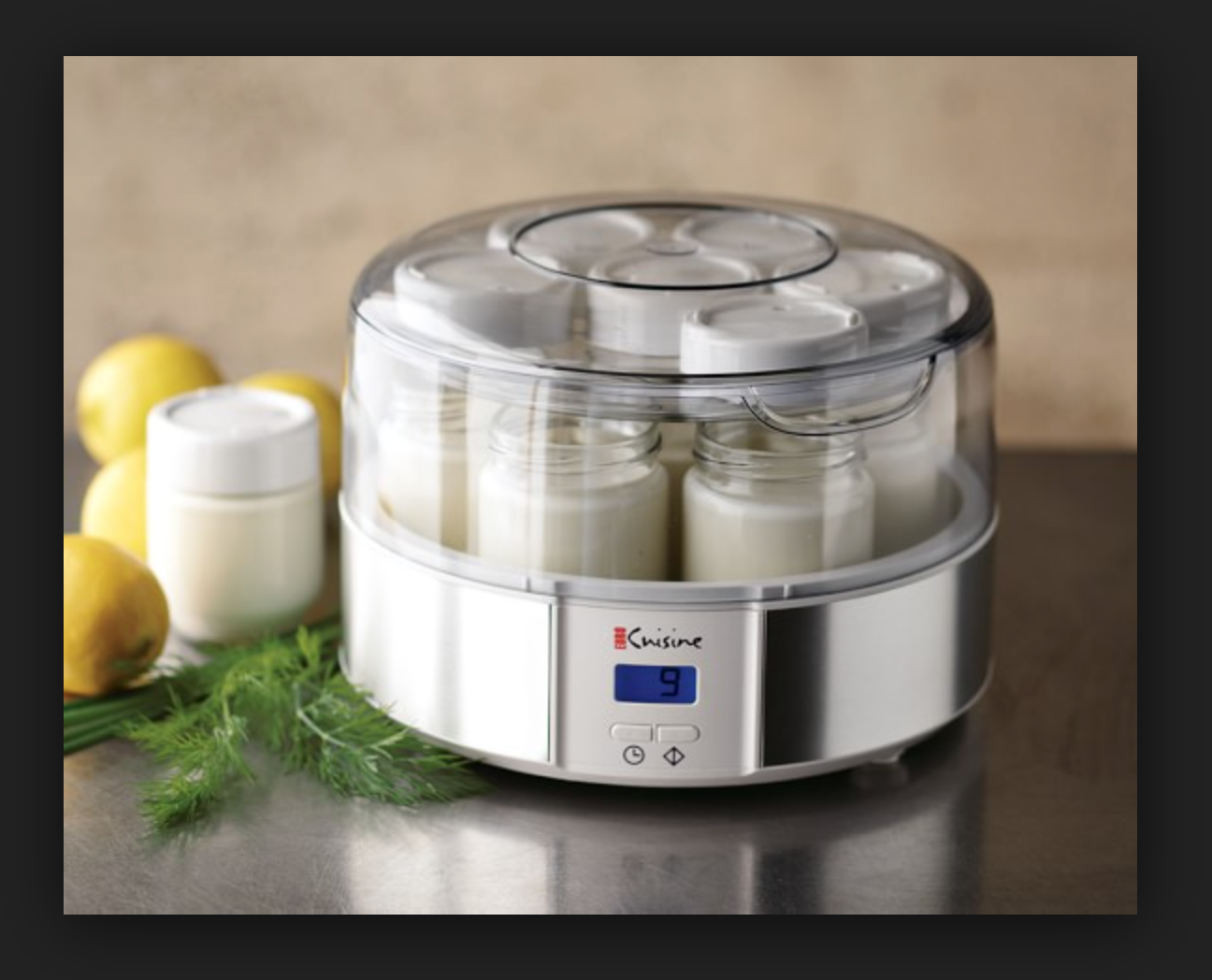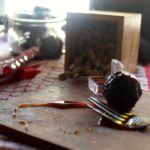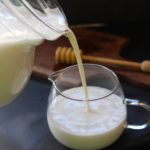For a South Indian,Yogurt (or let us call it by the common name in India – Curd) is a way of life!It is a necessity which manifests itself in the form of needy (and greedy) eating (ok lets call it hogging) in various ways!We love it the most with plain white rice during hot summer afternoons when having food is required but the mind declines most edibles.A bowl of curd rice (Thayir Saadam)with a great pickle enlivens the life of we South Indians and brings energy and vitality into our bodies!It keeps us happy and contented and proves to us that life is worth all the rice and curd available on the subcontinent!Yogurt is also used in Sambaram and other South Indian recipes and is a must have ingredient in the kitchen!
Check the recipe of Sambaram here :
Now what about the rest of India?Yes it is extensively used throughout India and is loved by one and all.North India pairs it with sugar or honey to make a great elixir which is offered to God and then fed to students going for exams or soldiers going for battles for assured success!Maharashtra uses it for the legendary Shrikhand while West Bengal sweetens everybody’s mouth with Mishti Doi!Punjab has the refreshing Lassi while Kerala the famous Moru!Teamed with salt,needed water and spices,Yogurt becomes Chaas/Chaach for a great digestive after a heavy meal!Tied up in a cloth to remove the whey (the water content) the resulting Cheese can be made into the eternally loved Cream Cheese or used in Mughal recipes like Dahi ke Kabab which will satiate everyone’s craving for snacks!Its used as a marinating agent as well as used to cure ailments in Ayurvedic home cures!In essence Yogurt is a boon to mankind and is a great item to make and store at home for its varied uses!
Internationally Yogurt has gone places as it is used widely in making Cream Cheese,dips and various sauces!
It is interesting to note that Yogurt is actually a “good bacteria” which when added to milk,ferments it into a thick superfood which has so many benefits!
Many people have asked me to post about making Yogurt.They have complains that their Yogurt does not set well,is watery,has a foul smell about it and is not “white”!So here I am discussing about Yogurt and all the FAQ’s associated with it.Just for knowledge the origin of Yogurt was first traced to Mesopotamia in Ancient Greece.From there it has come a long way in influencing almost every cuisine of the world.We need to check certain parameters for the perfect Yogurt and I will discuss each one in detail in the following space!
So what are the requirements for making Yogurt?
- Milk – preferably toned or low fat milk which makes the best tasting and best setting yogurt!
- Yogurt – for fermenting the milk!
- A set of clean utensils
- Required temperature for effective fermentation.It depends on the area you live.
- Additional ingredients to “speed up” fermentation!
So let us discuss these points in detail!
MILK
Milk is got from animals like Cows,Buffaloes,Goats,Sheep,Camel and Yak!
The kind of milk you choose for your Yogurt is very important.It affects :
- The taste of the Yogurt
- The setting point of the yogurt.
- The consistency and texture AND
- The colour of the Yogurt.
When we choose a high fat milk (like Buffalo),we get a rich,thick and creamy Yogurt.But the Yogurt will have the taste of cream and would have the cream in “pieces” as the fermentation of milk would not be able to break down the thick and rich cream.This kind of Yogurt is loved by many but for people like me I love a silky smooth non lumpy taste!This kind of yogurt is best for eating just by itself as it would not suit recipes which call for thickly beaten yogurt,dips or sauces!
Cow Milk gives great results in Yogurt making including superior taste!Highly recommended in Ayurveda!
Select a medium fat quotient milk which will give you a lovely texture and great taste.However a low fat milk also gives great results!The fermented Yogurt sets beautifully,has a great taste and is silky smooth to taste.These kind of Yogurt get whisked and beaten perfectly and are lovely for marinating and as dips and sauces!
NOTE – Please read the fat content in the milk before buying it to make Yogurt!
Do not use milk which has exceeded its expiry date,sour or curdled milk or that which has a suspicious colour!There are some places in india which supply spurious milk which might take on a green,black,brown or yellow colour.This has to be discarded as the milk is poisonous!
However in some countries especially Europe,the milk has a lovely cream colour owing to the quality of the cows as well as the fat content in the milk!
You can also use nut milks or plant milks to set yogurt.These are great options for the Lactose Intolerant patients!
YOGURT
Choose your Yogurt wisely!Opt for plain tasting yogurt rather than the flavoured ones.There are many kinds of flavours in the market these days.I once got a vanilla flavoured one by mistake and added it to a litre of milk and set it.The taste was great but it could be used only as a dessert as we use neutral Yogurt in most Indian recipes and then add sugar or salt according to requirement.
Greek Yogurt has very less water content and so is thick and rich!Use preferably a low fat yogurt to set as it gives great results and has a good nutritional quotient as well!In India Nestle A+ Yogurt is the best for setting(according to my experience)!
A SET OF CLEAN UTENSILS
Ensure that whatever utensils you use must be absolutely clean without any dust as once the milk ferments and there is any dust/dirt at the bottom,they will set in the Yogurt as well and might cause an infection for people who have it!So what do you require? These items :
- A bowl
- A wire whisk or spoon
- A wire mesh cover or splatter guard or a clean kitchen towel AND
- A clean cover for the bowl!
In India Yogurt is set in clay utensils which keep the set yogurt beautifully thick and fresh.I have set it in one here :
I will mention the use of each utensil while posting the recipe below!
TEMPERATURE
This is by far the most important element in Yogurt making!In olden days when there was no food thermometer,everything was based on the “eyeballing effect” which means an approximation done by feeling the milk with the tip of the fingers.These days this is regarded as an unhygienic procedure but you can find this in village homesteads in India.However I feel that if the hands are washed in hot water with a germ killing soap and patted dry with a clean towel,its ok in cases where there is an absence of a food thermometer.
So the right temperature to add the Yogurt culture to milk is at 45°C or 113°F when measured by a food thermometer.But if you are using your hands then the milk should be lukewarm – it should not be warm enough to be termed “hot” or cool enough to be termed “cold”.It should be cool enough but having a warm sensation when you test it.Or for a better option,take a tsp of the milk on a spoon and check the warmth.However many people have invested in a food thermometer for better accuracy!
After adding the Yogurt culture,the vessel should be covered to maintain the heat till the approximate setting time.
Tropical climates have a slower cooling of the milk after boiling and quick fermentation!However the temperate climates especially the Western regions of the world have quick cooling of the milk and slow fermentation.It might take upto 2 days for the milk to ferment.Sometimes the vessels are placed into ovens with the lowest heating point for 30 minutes,thereafter the heat is switched off and the vessels kept there till fermentation is complete.
Do not keep the fermented yogurt for a long time outside as the heat will cause the bacteria to take on a foul odour!
ADDITIONAL INGREDIENTS TO SPEED UP FERMENTATION
In emergency situations when we require yogurt and there is no other option,we use certain ingredients to hasten the process.There are certain simple ingredients which speed up the fermentation process.One of them are Fenugreek seeds (methi) or a single dried red chilli.Once the milk is prepared for fermentation,it is quite thick in consistency and these ingredients do not sink into it.Some people add a tsp of Fenugreek seeds while I prefer the dried red chilli.The setting yogurt does NOT get spicy in taste and the Chilli can be removed after fermentation.However one problem with the seeds is that they might make a small portion of the yogurt very bitter so a better choice is the Chilli.The Yogurt sets in 5 – 6 hours and has the same great taste excepting the colour which may get influenced from the red chilli!
Yogurt set with a dried red chilli – notice the colour taken on by the Yogurt…
There are professional Yogurt Makers which have taken other countries by storm and people are resorting to these machines for easier ways to prepare Yogurt.
A Yogurt Maker…
Image source : Google
Recipe for the perfect Yogurt :
Preparation Time : 1 hour
Setting Time : 7 – 8 hours
Makes : Approximately 1 kg/980 – 1000 gms
INGREDIENTS
1 liter milk
2 – 3 tbsp Yogurt culture
METHOD
Heat the milk till it comes to a boil.Take off heat and set aside covered with the wire mesh cover.This allows the heat vapours to go through the mesh holes and prevents condensation and any impurity/insects falling in the milk.
With a thermometer or with clean fingers check the milk.Once it reaches 45°C add the Yogurt culture.Mix very well with the whisk till the yogurt amalgamates into the milk.Cover with a lid and keep it in a clean,dry and warm place undisturbed till set.
Immediately refrigerate after setting.Keep refrigerated!
Lovely set Yogurt..
